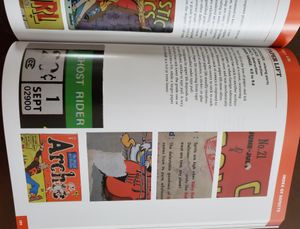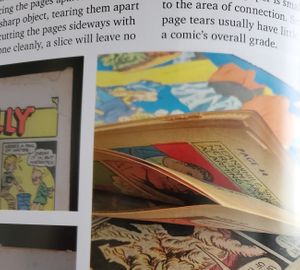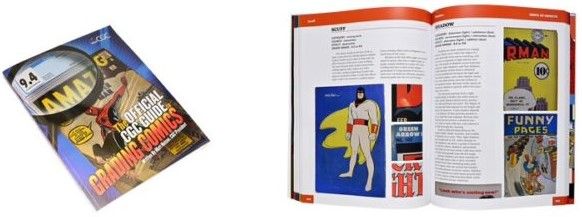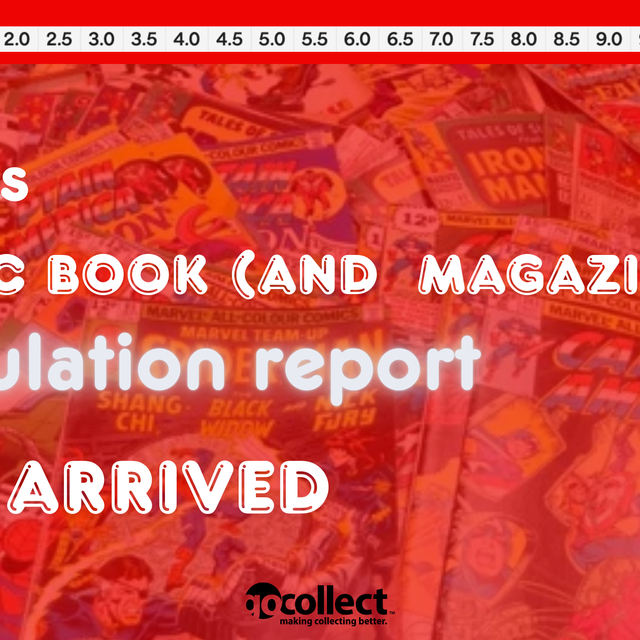
I. "Just the Facts" (Joe Friday Quote)
Personal Views
Most who read reviews assume the writer is a plant used to endorse a product under the guise of being impartial. That is not the case, here. I am of the belief that a 9.0 copy of a comic that is agreed upon by a buyer and seller is worth the same as a CGC 9.0 book. CGC is similar to a 3rd part arbitrator, needed when the parties cannot agree on the condition. CGC has some positive attributes as well as some flaws. No one is perfect, but the goal is to have more positives than negatives in the end. As a result, this book is reviewed to determine if this book is essential for all hobbyists, a specialized tool for some, or a waste of money.
Past CGC-GoCollect Conversation
During an interview with Matt Nelson, this author questions if CGC would publish what goes into their comic book grading process as well as their standards. Matt Nelson never let on that he was in fact working on a book that was of that mindset. The result of that work is "The Official CGC Guide to Grading Comics".
Reference Comparison
 Sample Reference Book with Coil Binding
Sample Reference Book with Coil BindingI wanted to review it as any reference book I would use in my legal profession. Reference books are tools and even new tools must perform to a high standard to be worthy of the capital expenditure. A reference book that does not stand the rigors of repetitive uses is not worth the money to buy. In addition, reference books that are physically well-designed but lack quality information are also not a benefit to the user.
It should be noted that this review was conducted as an independent analysis free of any bias. I used many reference products during my decades as an attorney and I am very demanding of my resource material. The review was performed because I believe a spotlight should be placed on this product. Collectors should know whether to spend their money on this book or to run from it. Here is what I found after reviewing the book.
II. Basic Elements
Price
The price for the softcover is $29.99. A hardcover edition was only recently introduced for $39.99 with a limited edition signed and numbered copy available for $49.99. Certain CGC members may also be able to use their discount code to save even more money for these editions. This price point makes this book within the reach of most hobbyists. The paperback edition was selected because it was the only copy available when I made my purchase. It is also the version that will probably be the most popular one sold because of the cheaper price point.
Paperback Edition
 Paperback Edition
Paperback EditionRight away, the physical composition of the book left me wanting more. Paperback reference books eventually fall into disrepair if used enough times. Hardcover or coil-bound books last longer because of the functionality of the binding. The very nature of this book is to be used and re-used. A digital copy may be the ideal format, but I believe that a hardcover or coil-bound edition would make this book ideal for a desk reference.
The hardcover was not available at the time I made my purchase, but I believe the additional cost may well be worth the price difference. A coil-bound edition that can be laid flat might be the best format for a book with this subject matter. This would allow for a better review of the pictures that would not be impacted by the book's binding.
Physical Layout
 Picture of Defect
Picture of DefectThe book is full of graphics. A textual description of flaws is not of any advantage to the user without pictures, thus the pictures had to be worthy of this book. High-resolution photographs make up about 50% of the book. This is a great ratio because the purpose of this reference book is to help the user identify and grade the physical defects of comic books. The pictures were a great tool that helped bring clarity to the text.
The chapter grouping was also well crafted. Reference books have a target audience ranging from the newbie collector all the way to the high-dollar value investor. Breaking down the description of comic books, defects, and other grading factors required this book to be written in as simplistic a way as possible while still conveying complex grading components. The book's chapter selections were not too big nor too small. This format made retaining the information easier for the reader.
III. Contents
Preface
This was a great bonus to the casual fan and a nice treat to the hardcore hobbyist. The history of comics and the tools of the trade are discussed in this abbreviated section. The inclusion of the Gerber Photo-Journals was an indication that this book was well-researched. Most fans do not realize the Gerber books are still highly useful tools for the well-prepared investor and collector. The mention of these books was a nice touch. The reference also demonstrated the author's integrity in mentioning other tools of the trade without focusing on their own brand.
The Main Body of the Book
The meat of the book is the insight into the grading process. The steps used to submit books, variants, and other topics are discussed, but the vast majority of the book is all about the grading of books. Actual tools used to grade books are discussed in some detail. These are items that should be added to every collector and investor's toolbox.
Defects that are well-known and rarely heard of are all discussed in great detail. For example, tape is listed as a defect because of the prevalence of its use with comics rather than listed in the restoration section. Many times, I have seen collectors and investors shy away from raw copies with tape because of fear of the restoration tag. Another defect mentioned is 'Off-Register,' which probably has not been known as a defect until mentioned in this publication. Insights like these are important for even the most well-versed hobbyist.
Tricks of the Trade
One of the assets of this book is the sharing of knowledge. In the defect section, one flaw is mentioned that does not impact grading but is an indicator of a possible way to identify a Pedigree collection book. This may not be known to the average collector but was a nice reveal in the book. Other "flaws" used to identify these Pedigree books were added treats.
This book also goes over imperfections associated with different ages and publishers in order to help make every amateur grader know what is common and what is rare for these comic books. Identifying these flaws could be the difference between a steal or a bust when purchasing a book.
Grade Range
One of the best parts of the book was the "Index of Grades" section. This section had the entire grade range of books shown with one comic book issue's front cover as an example for each grade. It was nice to see how the grades differed using the front cover's appearance. It would have been a bonus to see the back covers and pages inside as well. Grading defects exist for back cover flaws in the text but photos of these imperfections were ignored for this section. This book is best when it uses photographs to demonstrate concepts and flaws, so as a result, the lack of these photos was a missed opportunity.
IV. Summation
CGC Love/Hate
CGC gets mixed reviews among investors and collectors. Many choose to shy away from CGC as a result. Do not make this mistake with this book. Love CGC or not, this book is a significant advancement in revealing what goes into grading books. A book's grade is a major factor into how books are priced for both collectors and investors.
Thumbs Up or Down?
I would highly recommend the purchase of "The Official CGC Guide to Grading Comics". This book does have some flaws, like the paperback format not being best-suited for frequent usage. In addition, it would have been nice to have a sample book grading exercise included to allow the reader to put to use what they learned. This would allow the reader to determine if they were on the right path or not with their grading. That, however, should not exclude people from buying this book.
In Pantheon of Comic Reference Books
CGC firmly stamps itself as the authority on grading with this book. Many times in court, witnesses have to be qualified as experts based upon the use of their experience, approved methodology, and use of that approved methodology to the facts of the case. This book is a demonstration of all three. CGC's "The Official CGC Guide to Grading Comics" is a book that should be on the shelf of both novice and experienced comic book collectors and investors. This book is that good.
In the end, the knowledge contained within could save hobbyists thousands of dollars. The potential savings make "The Official CGC Guide to Grading Comics" probably the most important book that has come out on comics in a long time.







